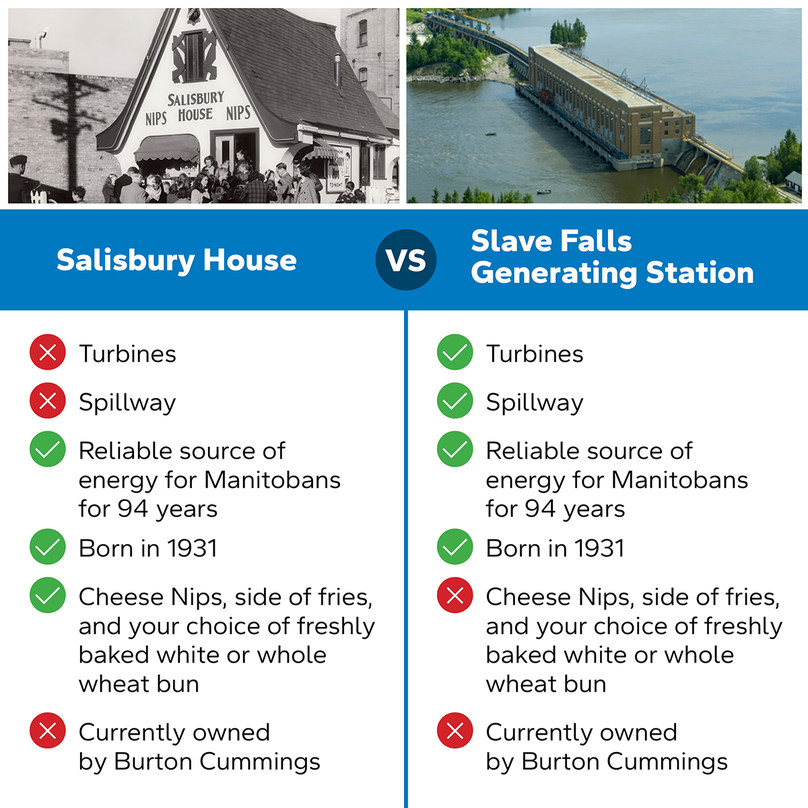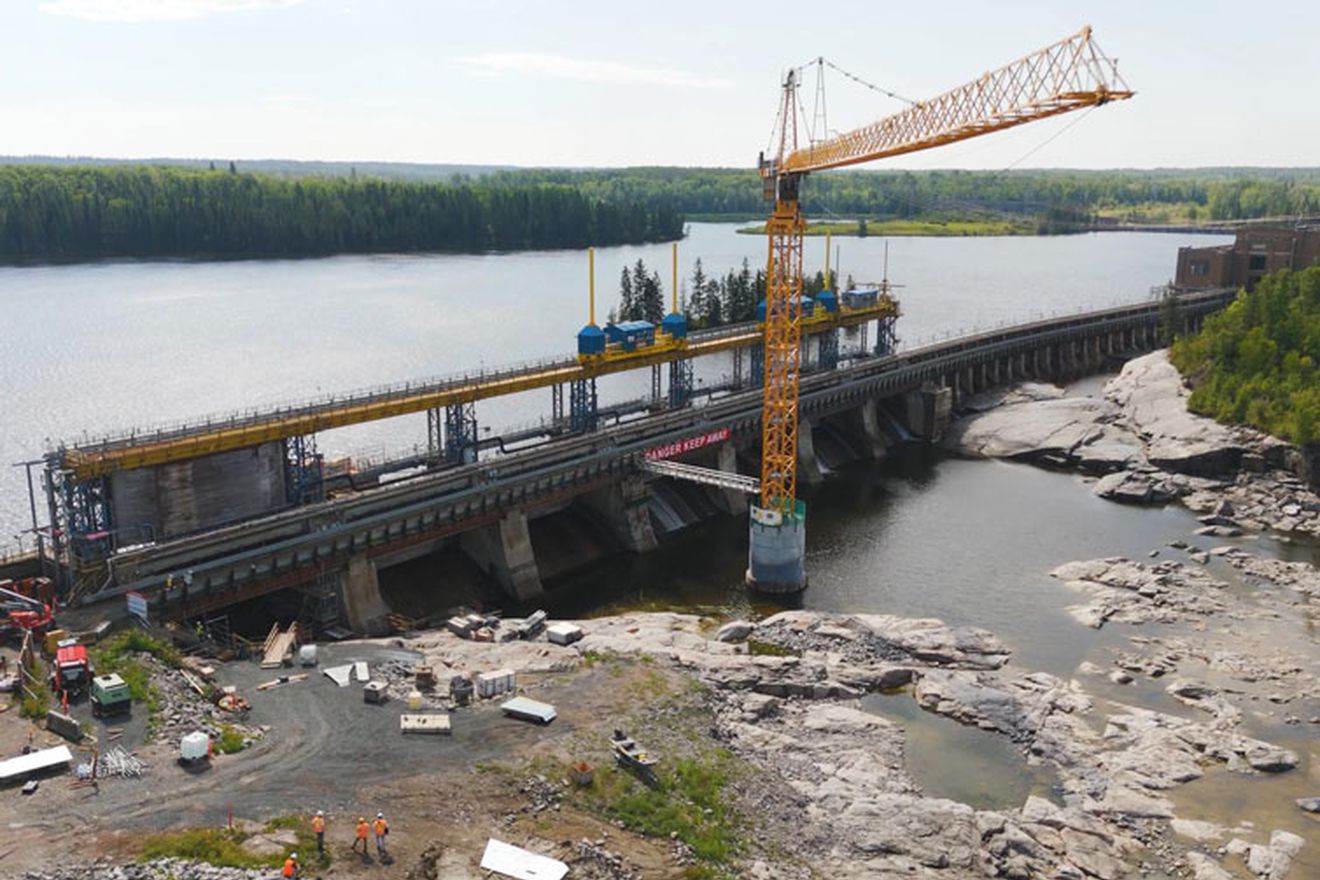The year is 1931 and two Manitoba powerhouses are born: Winnipeg’s iconic Salisbury House and Manitoba Hydro’s Slave Falls Generating Station.
Flash forward 94 years and both are still in service. While we acknowledge it’s impressive Sal’s Cheese Nips have stood the test of time, we’d like to remind you that the few hundred calories of energy they contain is dwarfed by Slave Falls’ 68 megawatt capacity.
Let’s see how the two match up in a variety of areas.

Enlarge image: A humorous comparison between Salisbury House and Slave Falls Generating Station.
How has Slave Falls lasted nearly a century?
94 years later, Slave Falls and five other generating stations on the Winnipeg River built between 1911 and 1955 still produce electricity for Manitobans. Combined, these six Winnipeg River generating stations provide enough electricity for approximately 150,000 electric heated homes or 325,000 natural gas heated homes. Slave Falls alone produces enough energy to power the entire city of Steinbach.
Slave Falls’ longevity can be credited to a long history of proactive maintenance. As you might expect, 94 years of water flow and ice freezing and thawing can have its wear, especially in Manitoba’s harsh winters. We’re currently restoring concrete at Slave Falls to keep it running for decades to come.
In 2018, our assessments found issues with deteriorating concrete, so we made some necessary repairs while continuing assessments. Further assessments found more concrete restoration was necessary at Slave Falls in order to ensure safety, reliability and minimal interruption to Manitobans. We are tackling this restoration in phases between 2024-2027.
Built by Manitobans a century ago, today we’re ensuring the legacy of Slave Falls Generating Station lives on long into the future.

Restoring Slave Falls Generating Station Sluiceway
Watch vintage construction footage of Slave Falls and how we’re working to extend its lifespan today.
Video: 2:36
History of construction at Slave Falls
Construction at Slave Falls started in 1928. It was built on the Winnipeg River in what is now Whiteshell Provincial Park. Its purpose was to power a growing city of Winnipeg, which in 1931, had a population of 284,295. The builder, City Hydro, later became known as Winnipeg Hydro, and was bought by Manitoba Hydro in 2002.
Powerful falls and a natural island divided the river at Slave, making it an ideal location for a power plant. The builders saved huge sums of money by using the island’s granite base as a foundation that earned it the nickname “Million Dollar Island.”
The project was completed in phases. In 1931, the first two units at Slave Falls Generating Station came online. By 1938, two more generating units were added to the station. After WWII the demand for electricity in Winnipeg had increased so dramatically that the powerhouse was expanded and the final four units were added in 1948, bringing the station’s generating capacity to 68 megawatts.

1929 Silent Film: Building the Slave Falls Generating Station
Step back in time with this captivating black and white silent film showcasing the construction of the Slave Falls Generating Station.
Video: 4:28
Only our third oldest station
While it’s impressive that Slave Falls Generating Station remains an important part of Manitoba’s power generation despite coming online in 1931, it is only the third oldest active station in our fleet.
Great Falls Generating Station’s first unit went into service in 1923. This station was developed by the Winnipeg Electric Railway Company, an early forerunner of Manitoba Hydro.
Pointe du Bois Generating Station’s first unit came online in 1911, making it the oldest active generating station in our fleet. Similar to Slave Falls, it was built by City Hydro, which eventually was bought by Manitoba Hydro.
Pointe du Bois hasn’t lasted 115 years without its own maintenance. Learn about the work happening at Pointe du Bois



